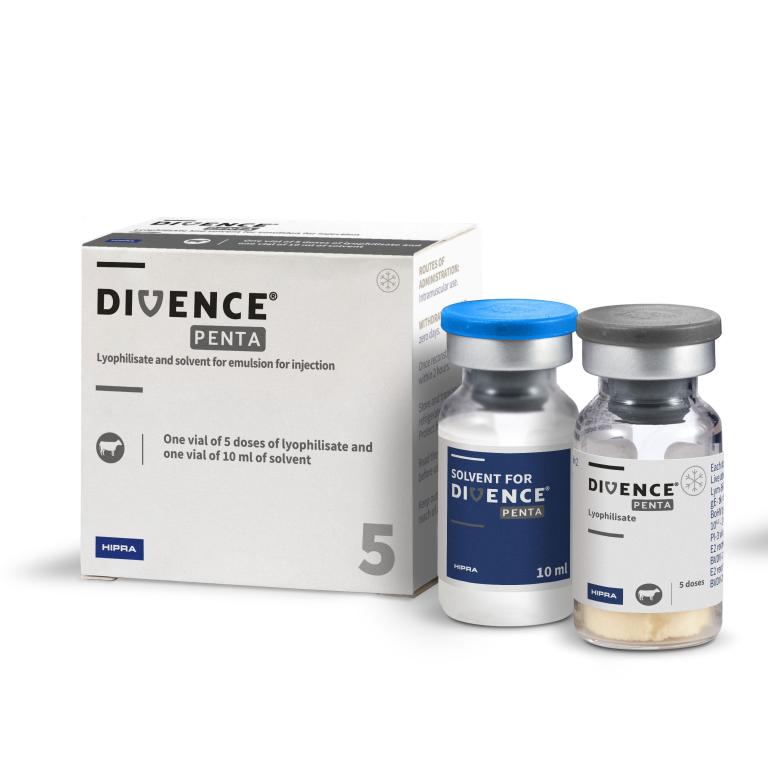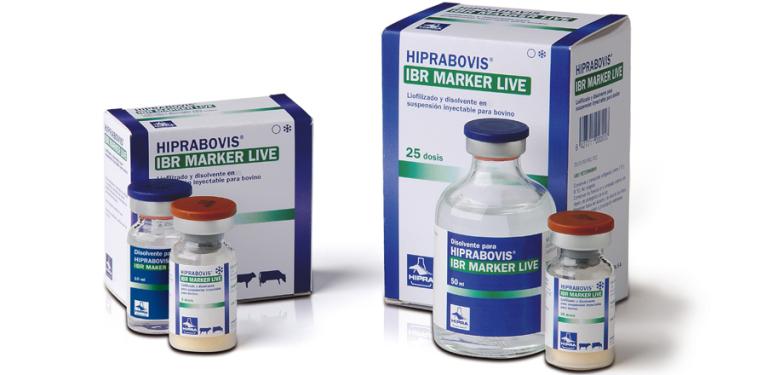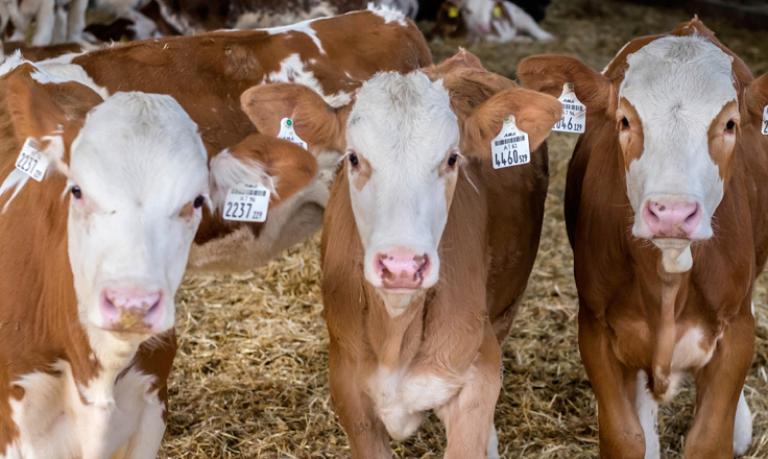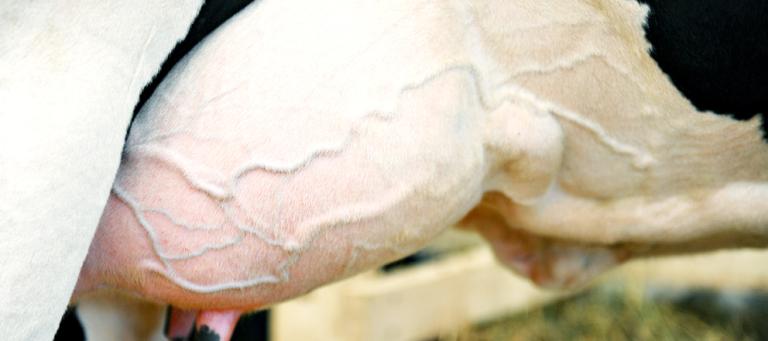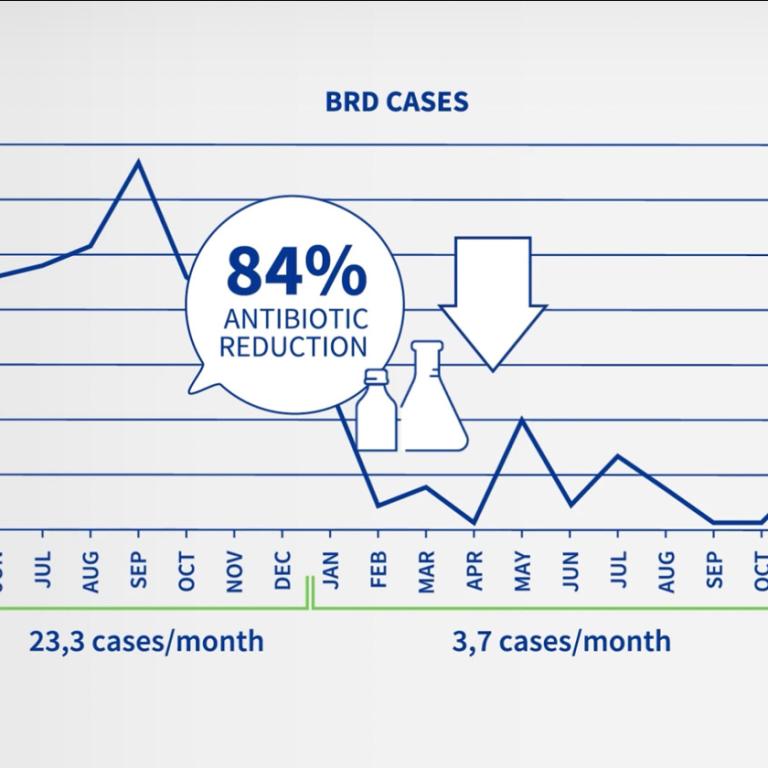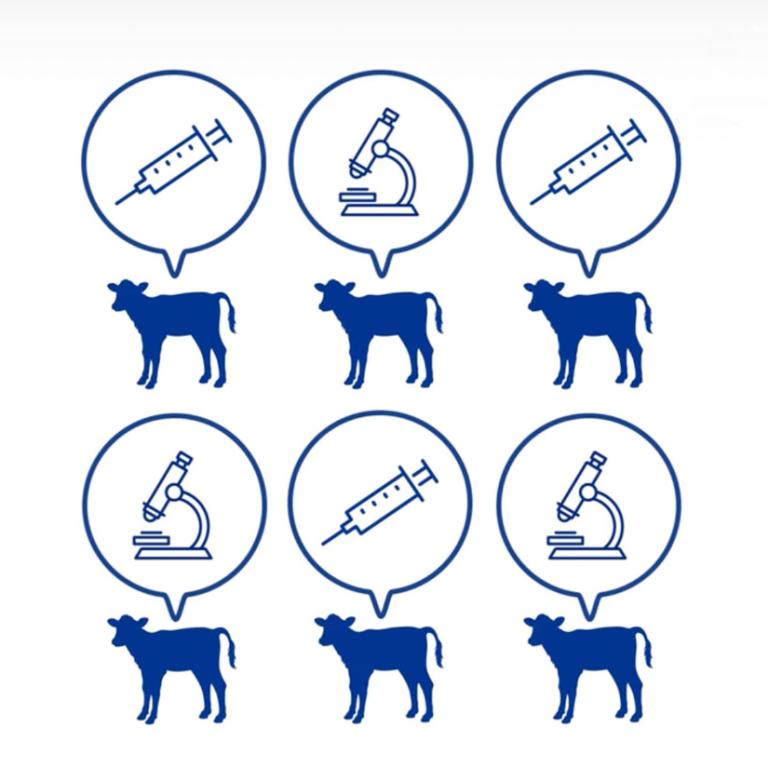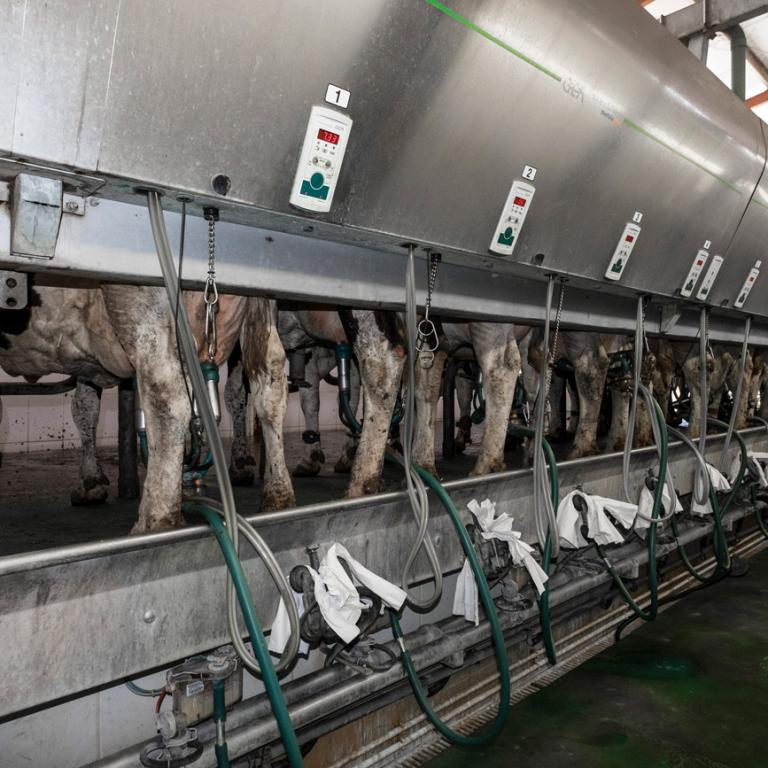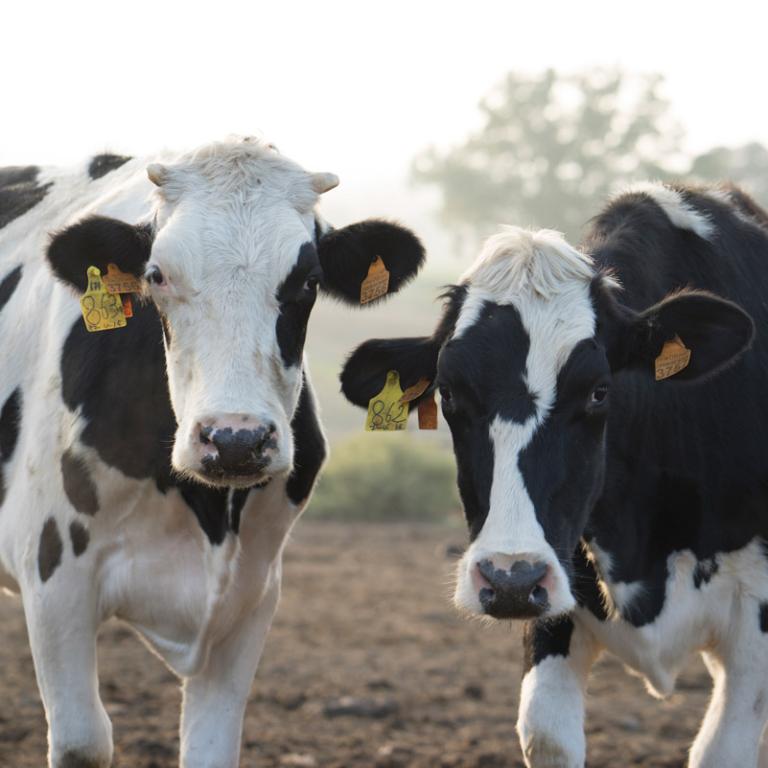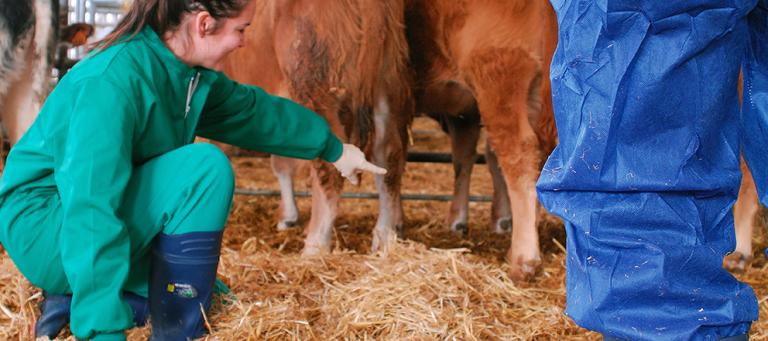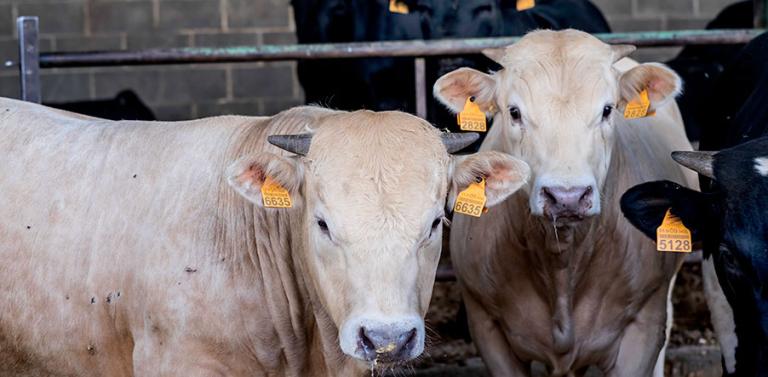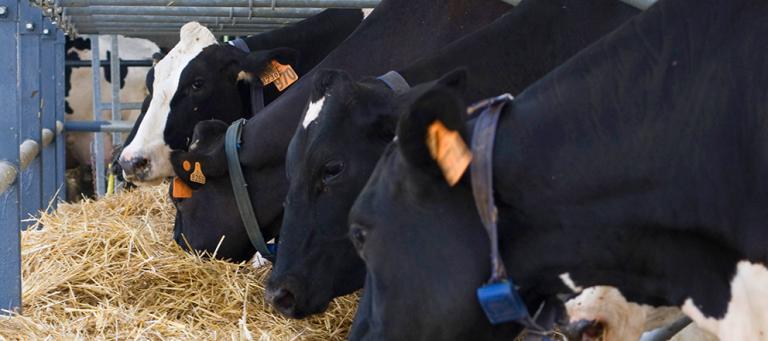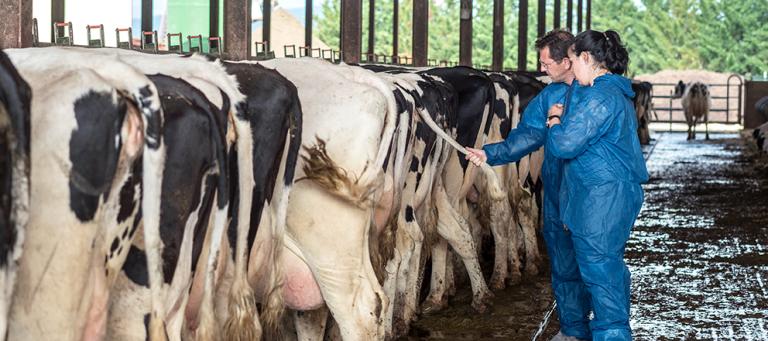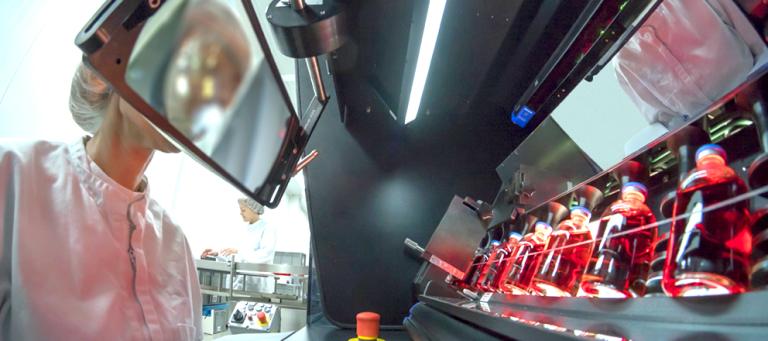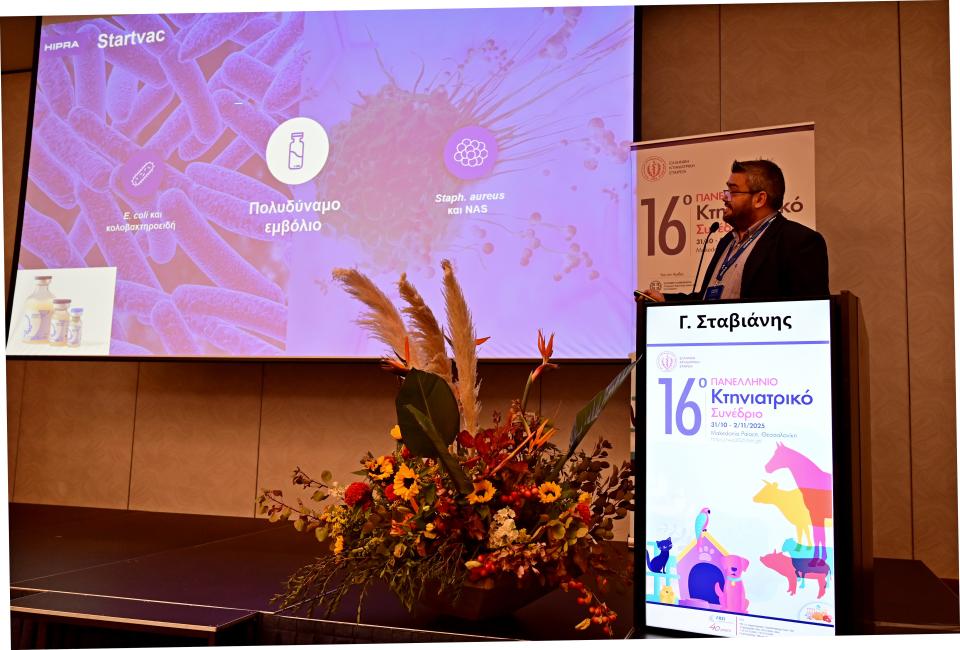INFECTIOUS PUSTULAR VULVOVAGINITIS, IBR, IPV, RED NOSE
AETIOLOGY:
Bovine Herpes virus, type I, DNA virus. Virus of the family Herpesviridae and the subfamily Alphaherpesvirinae. The virus has the ability of reaching the trigeminal ganglion provoking thus a latent infection. These latent infections can possibly reactivate, with or without clinical symptoms.
TRANSMISSION:
By direct contact and aerosol. Venereal transmission. The entire group may be affected within a period of 2 to 5 weeks. The incubation period is 3 to 7 days. Once infected, the animal will be a carrier of this herpes virus throughout its lifetime.
CLINICAL SIGNS:
- Respiratory form: cough, respiratory distress, clear to purulent nasal and ocular discharge. Erythema of the nasal mucous. This respiratory form may be present at any age, although it occurs more frequently from 6 to 8 months of age.
- Ocular form: conjunctivitis.
- Mastitis: a sharp drop in production that lasts for 10 to 15 days. It is usually in combination with the ocular or slight respiratory form and it may precede the reproductive form by several weeks.
- Venereal form: pustules in the vaginal and vulval mucosa, clear to purulent discharge. Pollakiuria. Bulls may present pustules on the penis and prepuce, balanoposthitis.
- Reproductive form: low reproductive indices on the farm, low fertility, endometritis and irregular returns to estrum.
- Abortive form: miscarriages at 6 and 8 months of gestation as well as stillbirths. Usually accompanied by the reproductive form.
- Generalized form: in newborn calves, with no colostral immunity. Severe hyperthermia and necrosis of the nasal and respiratory mucosa.
- Nervous form: in those younger than 6 months of age: incoordination, excitation and prostration. Strange behaviour.
LESIONS:
Pustules in the mucosa of the exterior genitals. Conjunctivitis. Erythema of the nasal and tracheal mucosa.
DIAGNOSIS:
Serology (ELISA, SN; IHA). Viral isolation, IFI, PCR.
TREATMENT, PREVENTION AND CONTROL:
Management of fattening and closed replacement, quarantine and vigilance of new incorporations into the group. Systematic prophylactic vaccination, live and inactivated vaccines.


